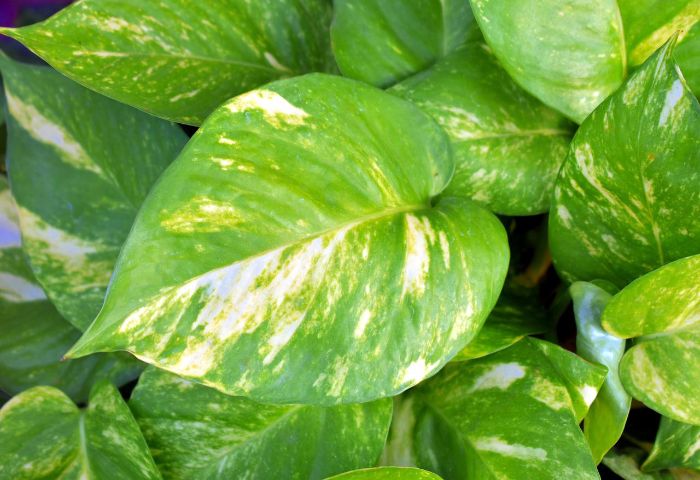Plant pot is a tropical vine with shiny, heart-shaped leaves that usually shows gold, white and yellow colors. It is one of the easiest houseplants to grow, so many prefer it in their homes, although we could say that it is a little demanding with its environmental requirements. If you also have a fish tank at home, learn how to decorate it growing java moss this way.
This plant originated in the tropical islands of French Polynesia in the South Pacific, but now it can be found all over the world as an attractive and easy to care for houseplant. Its vining nature makes it an excellent choice for use in hanging baskets, shelves, or stairs. In essence, photos can reach surprisingly large sizes, but in the home, it tends to stay smaller, making them ideal for decorating. If you want to learn how to plant photos, read on and find out the details.
Easy method for planting plant pot at home
Choose a pot that has a drainage hole in the bottom. Pot plants do not like to grow in soil that is too wet; they will rot easily.

- Plant plant pot in a well-draining potting mix or a soilless mix. If you can, feel free to mix in a few handfuls of perlite or coconut fiber to increase the drainage capacity of your potting soil.
- plant pot do well in a hanging basket to display the vines, or in a regular pot placed on a plant stand. They may be allowed to grow on walls, although their aerial roots, which they use to attach to surfaces such as trees or other vertical structures, can strip paint.
Once your plant has grown enough, you should prune it, and you can take the opportunity to propagate it. Take cuttings approximately five nodes long and soak them in water until they take root. Leave the cuttings in a warm and luminous place, and do not forget to change the water at least every two days.
Special requirements of potato
Light
When grown indoors, plant pot prefer bright but indirect light. Very variegated plants sometimes lose their leaf pattern and revert to full green foliage if they do not receive enough light. Moving them to brighter conditions generally restores the variety. If the leaves look pale, the plant is getting too much sun.
Soil
Pot plants thrive in common, well-drained potting soil. plant pot are quite tolerant of soil pH and can thrive in a variety of conditions, from neutral to acidic.
Water
A plant pot plant likes its soil to dry out completely between waterings. If left in continuously moist soil, the plant’s roots will rot. Black spots on the leaves indicate that the ground has been kept too wet. The plant will tell you when it needs water; this will be when it starts to drop. However, do not wait until the leaves begin to wilt, or the plant will lose some leaves. Dry, brown edges mean that the plant was kept dry for too long.
Temperature and humidity
They should be kept at temperatures that are constantly above ten °C, although they appreciate more a common ambient temperature ranging between 18 and 25 degrees. Also, pot plants like high humidity in the environment, so you can increase the humidity around the plant by keeping it in a typically humid area of the house, such as the kitchen or bathroom. Still, the plant is very tolerant and can thrive even in low humidity environments, so there is no need to invest in a humidifier.